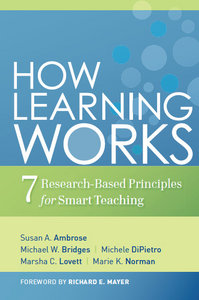To hear students tell it, people are awful, greedy, selfish, pukes. That is “people” are. When students use their sociological imaginations to try and understand a large group of people, they very often presume the worst about humanity. If you want to try this yourself, ask your students why capitalism works so well in the United States? 10 out of 10 times someone in the room will say something to the effect of, "because Americans are greedy people and capitalism works with greed and not against it.
I teach social change and environmental sociology and in both classes it’s very easy for students to become fatalistic, so dealing with the “people are awful” problem is something I’m well versed in.
Time For a Reality Check
When a student exclaims how awful people are, I start by reflecting back to them what I hear them saying. “So you think that all people are greedy? You think it’s human nature to be selfish?”
“Yes, of course.”
I probe further with, “The ‘people’ you are talking about sound like some brutish awful people. Is that how you see it?”
“I’m not saying I like it or anything, but yeah. If you look throughout history and even today, people are greedy. That’s just how it is.” This is a close approximation of how many students would respond.
Unwittingly, the student in this scenario has helped me create a straw man to knock down. I ask the rest of the class to jump in, “is it fair to say that all people are mean, selfish, greedy, awful people? Can you think of examples where people act selflessly and help one another?” As my students fire off examples I write them on the board. Students typically talk about donating blood, volunteering around town, responding to a fire or other emergency, people coming together after a natural disaster, etc.
The world has real problems, to be sure, and greed is one of them. But fatalistic students can quickly create a hellish caricature of reality. When students fall into the “people are awful” flavor of fatalism, I ask them to think about the people who they interact with everyday (e.g. their co-workers, the people they see on the street or at a store, their classmates, friends, and family.) I ask them if those people are as awful as the hypothetical “people” they are talking about. The problem with “people” is that they don’t really exist. The “people” our students often talk about are two dimensional. Having them think about the three dimensional people in their life can make it easier for them to see their fatalism.




